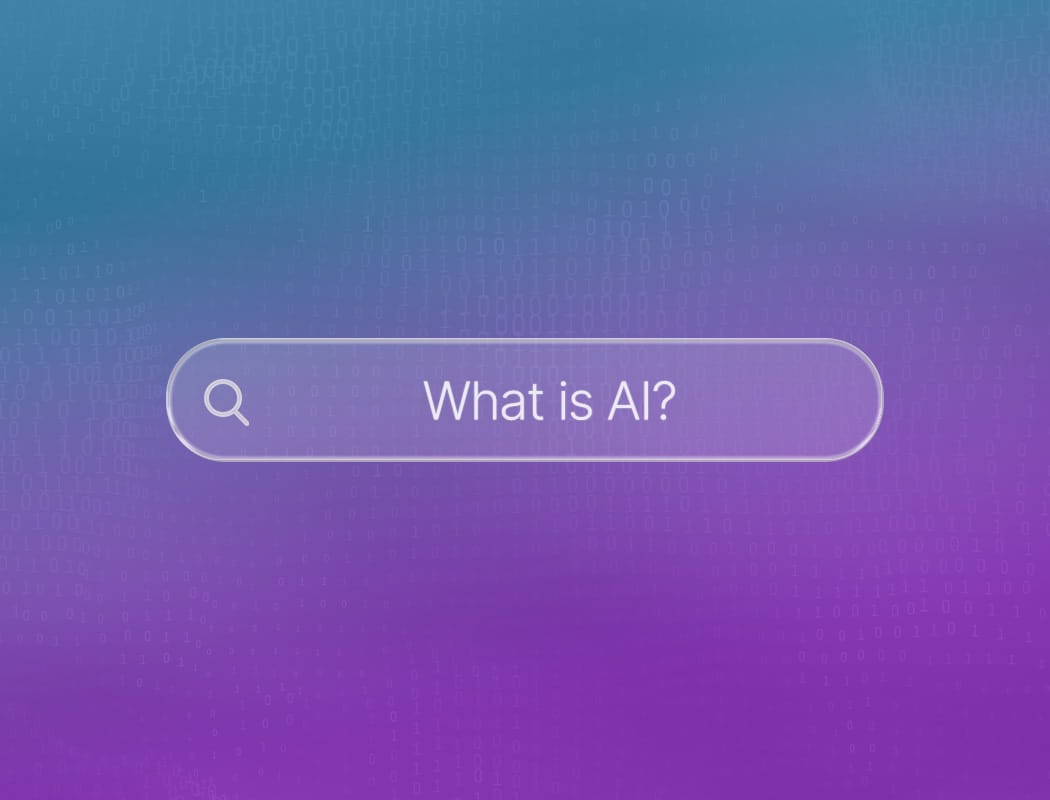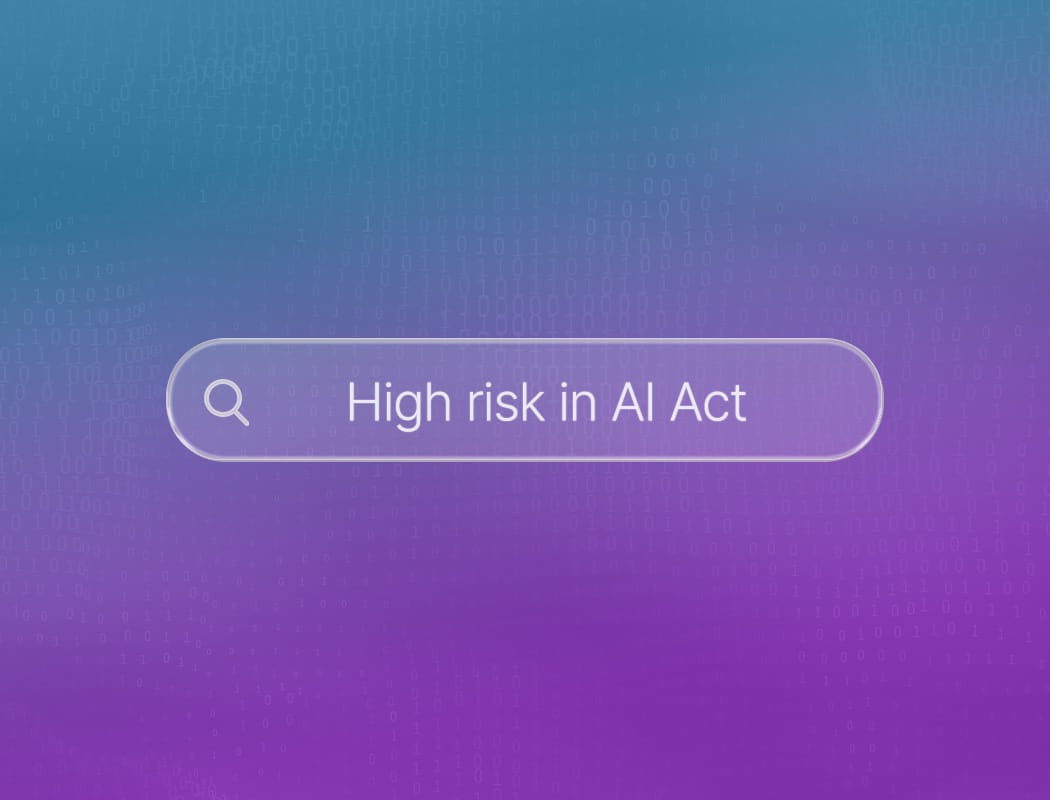What is artificial intelligence (AI)?
Artificial intelligence (AI) is a field that tries to make machines think and act like humans. It’s not about robots taking over the world, but more about computers learning from data, spotting patterns, and making decisions.
The history of AI goes back to the 1950s, when researchers first began exploring how machines could simulate human thinking and problem-solving.
At its core, AI is different from traditional programming. Regular software follows fixed instructions: do this, then that. AI systems, on the other hand, can learn from experience and adjust their behavior over time. They don’t just follow rules; they figure things out based on the data they’ve seen.
Some AI systems are designed to solve specific tasks, like recognizing faces or translating text. Others are more flexible and can learn a wide range of skills with the right data and training.
Why you hear about AI so often
You see artificial intelligence every day, even if you don’t realize it. When your phone suggests the next word as you type, or when streaming services recommend a new show, that’s AI at work.
It helps businesses answer customer questions faster and lets cars drive themselves. Artificial intelligence is always learning, growing, and finding new ways to help us in daily life.
AI is changing how we live and work. It makes tasks easier, speeds up processes, and helps us solve problems we couldn’t tackle before. From healthcare to entertainment, artificial intelligence is shaping the future.
But AI isn’t just about convenience and progress. It also raises important questions about privacy, fairness, and control. As AI becomes more powerful, we must think carefully about how it’s used and who benefits.
What are the main applications of AI?
Artificial intelligence is no longer just a buzzword. It’s quietly woven into the fabric of our daily lives, often in ways we barely notice.
From the moment you unlock your phone with your face to the instant your favorite playlist appears on your screen, artificial intelligence is working behind the scenes. But its reach goes far beyond convenience.
Today, AI is transforming industries, streamlining processes, and opening up new possibilities for both businesses and individuals.
Business and industry applications
In the world of business, artificial intelligence is a game changer. Companies use AI to analyze massive amounts of data, predict trends, and automate repetitive tasks.
Customer service bots answer questions around the clock, while smart algorithms help retailers manage inventory and personalize shopping experiences.
In manufacturing, AI-driven robots assemble products with precision and speed. Even financial institutions rely on AI to detect fraud and make investment decisions faster than ever before.
Everyday life and society
Artificial intelligence also shapes our everyday routines. Voice assistants help us set reminders and control smart homes. Healthcare providers use AI to diagnose diseases earlier and recommend treatments tailored to each patient.
In transportation, AI powers navigation apps and even helps self-driving cars make split-second decisions. Whether it’s AI in education, entertainment or public safety, AI continues to find new ways to make life easier and more efficient.

How does AI work?
Artificial intelligence is the science of teaching machines to think and act in ways that seem smart. At its core, AI works by taking in huge amounts of data, finding patterns, and then using those patterns to make decisions or predictions.
This process can be as simple as sorting emails into spam and not spam, or as complex as driving a car through city streets.
The magic lies in how these systems learn from experience, improve over time, and sometimes even surprise us with what they can do. But how does this all come together behind the scenes? Let’s break it down step by step.
Learning from data
The first step in any artificial intelligence system is learning from data. Think of this as feeding the machine a giant stack of examples.
For instance, if you want an AI to recognize cats in photos, you show it thousands of pictures labeled “cat” or “not cat.” The system looks for similarities in the cat photos. Maybe it notices pointy ears, whiskers, or a certain shape of eyes. Over time, it starts to build a mental map of what makes a cat a cat.
This process is called training, and it’s how AI gets smarter with every new piece of information it receives. The more data you give it, the better it becomes at spotting patterns and making accurate guesses.
Making predictions
Once the artificial intelligence has learned from enough data, it’s ready to make predictions. This is where things get interesting.
Imagine you upload a new photo the AI has never seen before. It scans the image, compares it to everything it’s learned, and decides whether there’s a cat in the picture.
Sometimes it gets it right, sometimes it doesn’t, but with each guess, it learns a little more. This ability to predict isn’t limited to photos.
AI can forecast the weather, suggest songs you might like, or even help doctors spot diseases early. The key is that it uses past experiences to make educated guesses about new situations, just like people do.
Improving through feedback
No artificial intelligence system is perfect from the start. That’s why feedback is so important. When the AI makes a mistak (maybe it thinks a dog is a cat) you can correct it.
The system takes this correction and updates its understanding, so it’s less likely to make the same error next time. This cycle of trying, failing, and learning is what helps AI get better over time.
Some systems even learn on their own, constantly tweaking their rules as they gather more data. This ongoing improvement is what sets artificial intelligence apart from traditional computer programs, which only do exactly what they’re told.

Working behind the scenes
Most of the time, you don’t even notice artificial intelligence at work. It’s quietly sorting your emails, recommending movies, or helping you navigate traffic.
Behind the scenes, complex algorithms are crunching numbers, weighing options, and making split-second decisions. These algorithms are built by teams of engineers and scientists who design them to solve specific problems.
Different kinds of AI
Not all artificial intelligence works the same way. In fact, there are several types, and each one has its own way of solving problems.
Some follow strict instructions, while others learn by watching and experimenting. Understanding these types helps us see what AI can (and can’t) do.
Rule-based systems
Rule-based AI is like a giant flowchart. It follows a clear list of “if this happens, then do that” instructions created by humans. For example, if someone says “hello” to a chatbot, it might respond with “Hi there! How can I help you today?”
These systems are great for predictable tasks, like answering simple questions or detecting errors in a form. But they have limits. If something unexpected happens—something the rules don’t cover—the system gets stuck.
Rule-based AI doesn’t learn on its own. It can only do what it’s been told to do. That’s why it’s best for situations that don’t change much or where precision is more important than flexibility.
Machine learning
Machine learning is where things start to get smarter. Instead of being told exactly what to do, this kind of AI looks at data and learns patterns by itself. You might give it thousands of images labeled “cat” or “not cat,” and it will figure out what makes a cat a cat (like the shape of the ears or the texture of the fur).
Over time, machine learning systems can spot patterns we might not even notice. They don’t need to be reprogrammed every time something new comes up, they just need more examples.
The more data these systems have, the better they get. But they also need to be trained carefully to avoid picking up the wrong patterns or making biased decisions.
Neural networks and deep learning
Neural networks are a powerful type of machine learning. They’re inspired by how the human brain works, with layers of “neurons” that process information in stages. Each layer takes the input, looks for patterns, and passes the result to the next layer, gradually building up a complex understanding of the data.
For example, to recognize a face in a photo, one layer might focus on edges, another on shapes, and another on the overall layout. All together, they can identify a face, even if the person is wearing sunglasses or making a funny expression.
Deep learning takes this idea even further by adding more layers. These deep neural networks can handle incredibly complex tasks, like translating languages, playing video games, or detecting signs of disease in medical images.
They often need massive amounts of data and computing power, but they can achieve results that sometimes seem almost magical.
Still, deep learning isn’t perfect. It can be hard to understand exactly how these systems make decisions, which can raise concerns about transparency and trust.





